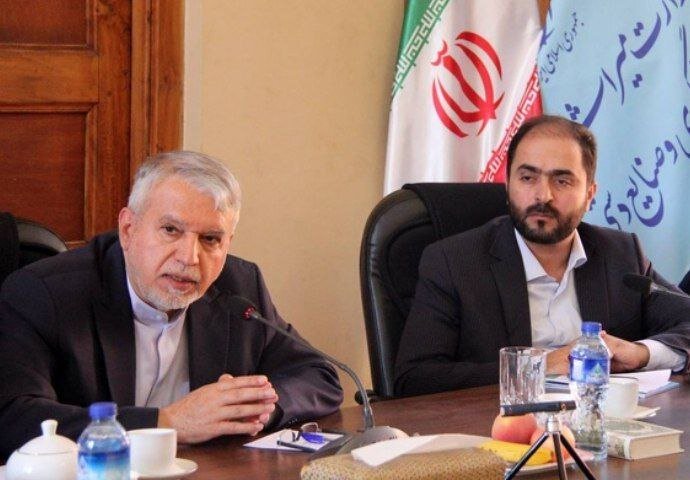Tourism minister highlights progress in restoration of historical buildings

TEHRAN – Iran’s Cultural Heritage, Tourism, and Handicrafts Minister has praised the “progress” made in the restoration and revitalization of historical buildings.
Seyyed Reza Salehi-Amiri made the remarks on Monday during his visit to the Revitalization and Utilization Fund for Historical Places where he said: “Current efforts are incomparable to the past and there have been some significant advancements.”
“The restoration and revitalization activities I observed in several provinces are on the right track,” Salehi-Amiri told Shahab Talai-Shokri who presides over the Utilization Fund.
“By addressing the existing deficiencies, many more historical structures can be restored and brought back to life.”
The minister underlines that the achievements of the fund are far more impressive than in previous years. Furthermore, he outlined the importance of formulating a comprehensive five-year plan focusing on the restoration, relative economic development, and legal matters related to historical structures.
“The future of cultural heritage and tourism lies in practical and achievable plans. Formulating a five-year plan that is both realistic and implementable is needed for the fund,” he urged.
Salehi-Amiri also highlighted the necessity of a further public investment to accelerate progress, calling for an end to day-to-day management as he underlined the adoption of a more strategic, program-based approach.
He pointed out that attracting foreign tourists and keeping pace with neighboring countries requires clear goals and the establishment of proper infrastructure.
Talai-Shokri, for his part, provided an overview of the fund’s recent activities, revealing that over the past year, the fund had managed to restore 47 historical structures, overcoming various challenges along the way. “Last year, we attracted 3.5 trillion rials (some $5.8 million) in public investment,” he added.
Talai-Shokri also shared details of ongoing projects, noting that the fund is currently involved in 154 projects, with 42 buildings under design, 50 in the process of restoration, and 62 already operational, managed by private sector investors.
He underscored the importance of addressing legal and restoration challenges faced by approximately 3,000 government-owned historical buildings and 10,000 privately owned ones.
“Many of these are listed on the National Register of Cultural Heritage and should be prioritized for restoration… There is a need for operational plans to address the registration and preservation of these sites,” Talai-Shokri explained.
The director also mentioned plans to introduce incentive packages to encourage public participation in the preservation and revitalization of historical sites. “The groundwork has been laid for greater investment and the transfer of more historical buildings to private hands under the current administration,” he said.
In addition to physical restoration, he highlighted efforts to preserve and share the oral history of some of these sites, with the aim of ensuring their cultural and historical narratives are also safeguarded.
The Fund (known by its Persian acronym SAABTA) provides the opportunity for privately owned businesses to run certain old structures to be maintained and repurposed into boutique hotels, traditional restaurants, or lodging places, among other businesses.
Iran hosts some of the world’s oldest cultural monuments, including bazaars, museums, mosques, bridges, bathhouses, madrasas, and gardens, as well as rich natural and rural landscapes, 28 of which have gained UNESCO World Heritage labels.
AM
